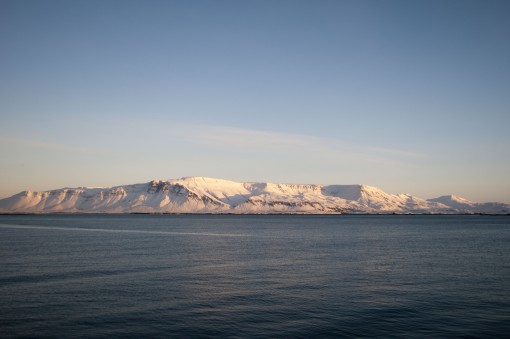IAM assistant editor Andrew Anderson travels to Iceland to report on IMMERSION Festival, and finds a special city and music scene. You can read part one of this article here
I’ve been in Iceland for just two days and already my brain is full to bursting with new knowledge about contemporary classical music. ‘It’s a very small world, so don’t worry,’ says composer and fellow festival attendee Aaron Holloway-Nahum, ‘you can pick up pretty much everything you need to know in about 24 hours.’
I’m sure that’s a slight exaggeration, but all the same contemporary classical music is a (relatively) small scene. So small, in fact, that no one is quite sure what to call it. New music? Contemporary classical? Modern composition? ‘None of the labels quite make sense, and no one can really agree on it,’ confirms Caput ensemble co-founder Kolbeinn Bjarnason.
Then there’s the fact that contemporary classical does not always draw a crowd. ‘There was time in the 80s when we first began and it was very popular, but now it is very hard to get people to come to these concerts,’ continues Bjarnason, who jokes that he expects attendance for the festival to be, ‘somewhere between three and 300’.

All the more reason then for the five Scandinavian groups at IMMERSION to come together in one place, pooling their pulling power. It’s a cold but clear morning as I walk from the hotel to Harpa along the waterfront, with many people enjoying the amazing view of the mountains across the harbour. The crowds are also gathering inside Harpa too – far closer to 300 than three for sure – as opening ensemble Caput take to the stage.

‘We selected the programme based on people we have worked with before,’ says festival organiser and Caput member Pétur Jonasson. ‘We thought that this would make it an intimate experience both for us and the audience.’ The close bond certainly comes across in the wonderful playing, with Estonian composer Helena Tulve’s piece Stream the one on everyone’s lips afterwards.
Next comes Sweden’s Norrbotten NEO, whose selections are closer to a traditional chamber concert. That said, they open with an electronic piece by composer Joakim Sandgren, who mixes the sound live from a desk in front of the stage. This is more like what your new music novice might expect – bizarre noises, violin scrapes and other scratchy sounds. ‘I make the pieces from found sounds, and explore all the possibilities with just a few starting elements,’ explains Sandgren when I catch up with him in the bar later. Incredibly, Sandgren has been using just a few seconds of recorded noise as the basis for all his compositions over the last decade.

After an hour’s break comes Cikada. Running all three of their pieces together, this Norwegian ensemble’s virtuosity leaves some in the audience open-mouthed. ‘We just experienced something magical,’ says Holloway-Nahum afterwards, while Spanish pianist Vanesa Santanach sums it up in one word: ‘Wow.’
One of two full-time ensembles here, Esbjerg Ensemble’s appearance at IMMERSION was by no means certain, as just a few months before their funding was under threat. ‘The city is quite conservative and decided they didn’t need us anymore,’ says artistic manager and director Katrine Skaug. ‘But it ended up being a giant PR campaign for us. Now we’re actually in a stronger position than ever because they finally realise how important we are to the people.’ Needless to say their playing proves their worth, with quirky piece for solo snare drum Stop Speaking a highlight.

It was then that things got a bit strange. defunensemble’s programme featured a piece called Death Metal Rock with Head Bang by Hikari Kiyama, as well as an electric sewing machine and instruments covered in masking tape. It was brilliant: a fitting and funny end to a fantastic festival.
As I took an early bus to the airport next morning I thought about what I had learned on the trip: that new music (or whatever you want to call it) is far more accessible than you might think; that Scandinavians are about the friendliest people you’re ever likely to meet; and that, despite its small size, Iceland packs a pretty big cultural punch. ‘Hopefully we’ll get funding and we can do it all again next year,’ says Jonasson. I hope so too.

